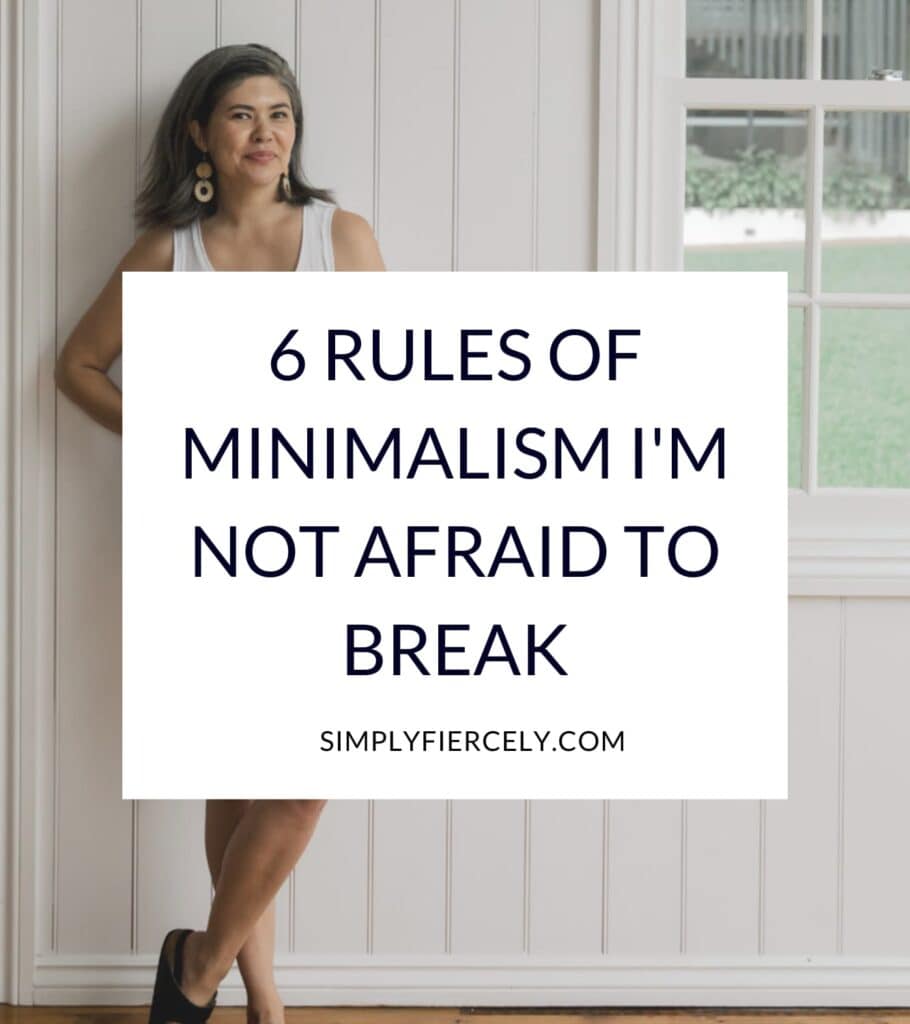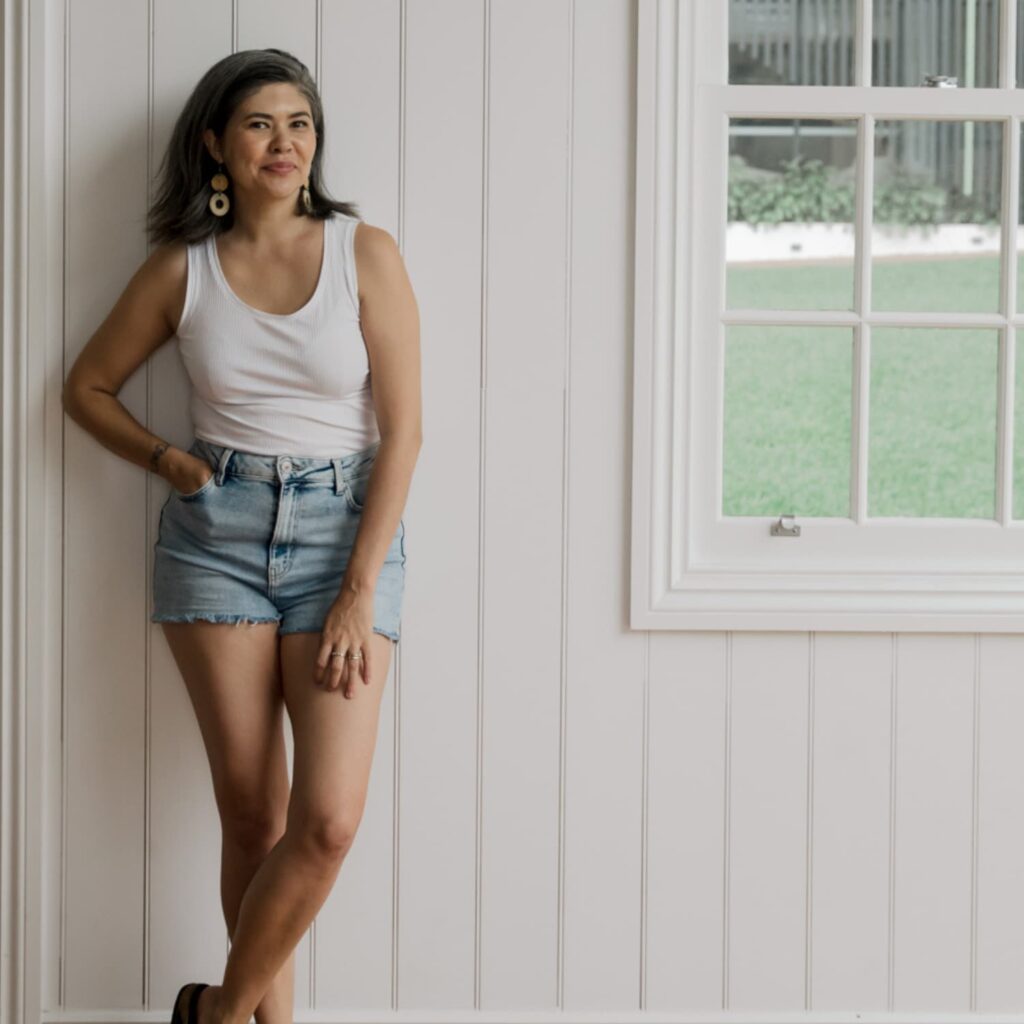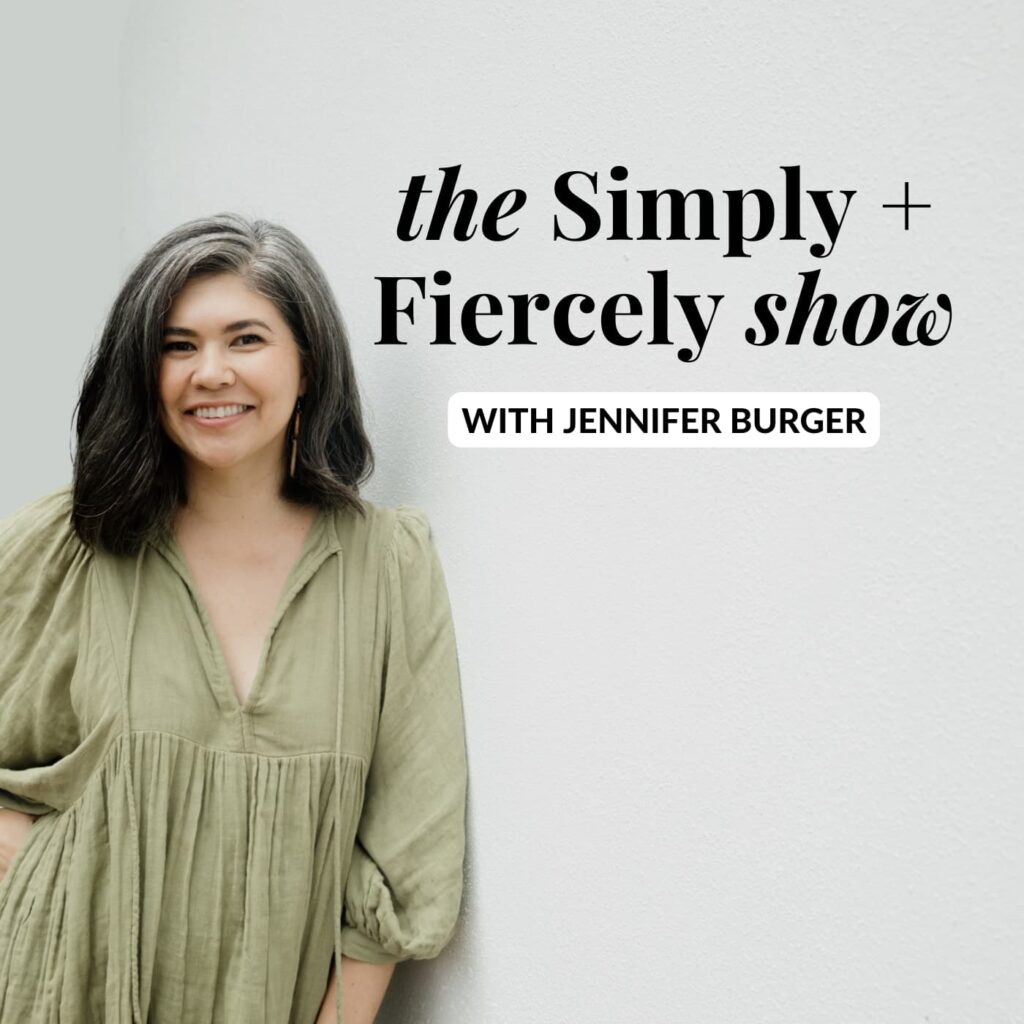Are you a fan of minimalist living but tired of feeling like you need to follow a strict set of rules to be a “real” minimalist? As someone who’s been practising minimalism for years, I can tell you that it’s okay to break the rules from time to time.
In fact, I believe there’s only one true rule of minimalism: be intentional about what you allow into your life.
What you own and do should reflect your values and priorities, meaning minimalism will look different for everyone. The guidelines are flexible because it’s not a one size fits all lifestyle.
However, I know some minimalist guidelines are broadly accepted—and while I think you should absolutely keep doing what works for you, I will share why I bend the rules occasionally.
From owning duplicates to keeping sentimental items, we’ll cover it all. So, if you’ve ever felt guilty for not following every single rule of minimalism, this post is for you. Let’s dive in!

Breaking the Minimalism Rulebook
As a reminder, this post is a bit tongue in cheek, intended to inspire anyone who feels restricted by strict rules, not to shame anyone who follows them.
The 20/20 Rule
The 20/20 Rule was created by Joshua Fields Millburn and Ryan Nicodemus, known collectively as The Minimalists. They suggest you declutter anything you’re keeping “just in case” if you can replace it for less than $20 and in less than 20 minutes from your current location.
Now, I like what they’re doing in theory: asking you to think critically about the item you’re trying to declutter. This is important because we tend to focus on what could go wrong without considering possible solutions.
For example, suppose you’re decluttering excess dinner plates. In that case, your mind will throw up thoughts like “What if I host a dinner party and don’t have enough” while ignoring alternatives such as “I could just ask a friend to bring extra plates.”
I think the 20/20 rule helps because it opens the line of thinking: what would I do if I needed this item and didn’t have it. But I don’t like the lack of consideration for individual circumstances.
Depending on the contents of your bank account, twenty dollars might be a lot to waste. And twenty minutes might not seem like a lot of time but ask any mother with a child screaming for his pacifier what she thinks. I bet she’ll wish she kept a few extras “just in case”!
So what do I recommend people do instead? Create their own version of the 20/20 rule that caters to their values, priorities and lifestyle.
For example, I keep used gift bags that I could easily replace for less than $20 and in less than 20 minutes. But I have better things to do with my time and money than repeatedly buying something I’ve been given for free, and I’m mindful of my environmental impact.
You might disagree, and that’s fine! Again, minimalism is about more than just living with less stuff. The minimalist mindset means living in alignment with your values and priorities, which will be different for everyone.
Regardless, I reconcile my collection with my minimalist lifestyle by setting a rule around how many bags I’ll keep. I have a small, dedicated space where they’re saved, and once it’s full, it’s time to let go.
I encourage you to write your own minimalist rules and remember it’s okay to change your mind down the road as your priorities change.
Start by dumping everything out
Many people believe that the first step is to dump everything out of your closet, your drawers, or whatever space you’re decluttering.
But I’ll be honest—I am NOT a fan of this rule.
Why? Because it’s overwhelming! You create a big mess, you’re under pressure (because you don’t want to leave the big mess), and it’s not efficient. Going through everything you own, one at a time, and asking yourself, “should I keep this?” is the decluttering equivalent of looking for a needle in a haystack. It’s entirely at odds with the minimalist mantra of “less stress,” and the last time I tried this method, I ended up on the floor in tears.
There are, of course, different ways to declutter, and if this works for you, great. But if not, I recommend taking more intentional action.
For example, let’s consider your closet. Before you dump your entire wardrobe on your bed, a good rule of thumb is to think about the end goal you want to achieve. Create a clear vision for your wardrobe and then use it to make bulk decisions about what to declutter.
When I was decluttering clothes, I realised I didn’t want to keep anything made out of polyester because I live in a sub-tropical climate, and the fabric didn’t breathe. The same went for anything dry-clean only (I’m way too lazy to take anything to the dry cleaner) or anything yellow (it makes me look washed out).
By making these broad decisions ahead of time, I cleared a ton of clothes from my closet in one quick sweep, which meant that when I finally sat down to go through things one by one, it was much more manageable.
You can do the same no matter what you’re decluttering. Simply pause before you dive in, think intentionally about your space, and then ask yourself—what generalisations can I make about what does or doesn’t belong. Do this before you dump everything out; I can guarantee it will make life easier.
Related Post: How to Spend Less Time Cleaning: My Minimalist Cleaning Routines
Don’t keep sentimental items
I know that some hardcore minimalists say you should never keep sentimental items, but I do and here’s why.
Sentimental items are only clutter if they come between you and the life you want.
In the words of Joshua Becker from Becoming Minimalist, “Minimalism is the intentional promotion of the things we most value and the removal of anything that distracts us from it.” If you have something that adds value to your life, even if it’s seemingly useless (like an old journal or photograph), don’t feel bad about keeping it. The minimalist police won’t knock down your door over a few knick-knacks!
However, being honest with yourself about the emotions you associate with your item is important. Are you keep grandma’s old scarf because you feel warm and fuzzy every time you use it? Or are you possibly using it as a placeholder for complicated feelings? Maybe you didn’t visit her during her last years of life, and now you feel guilty—but you can avoid processing those emotions if you keep her stuff.
There are no right or wrong answers but have a good think about why you feel attached. Then I recommend creating limits for sentimental items (refer back to my suggestion about gift bags) with consideration to the space you have and what you most want to do with it.
One in, one out
The one in, one out rule is relatively simple: anytime you bring something new into your home, you should also take something out.
I don’t wholly disagree with it, but I think you need to be careful, especially if:
- Your goal as a minimalist is to be a more conscious consumer
- You’ve ever struggled with mindless shopping
It’s because the one in, one out rule can unintentionally give you permission to overshop.
I’ve seen this firsthand with some of my clients; overall, their homes are clutter-free, but they’re stuck in a cycle of shopping and decluttering. Often, it’s just little things, but if you find yourself in Target every week, then you have to take a step back and look at your goals.
If your only concern is a minimalist aesthetic, then you’ll achieve the look, but it’s not exactly in alignment with the principles of minimalism.
Having said that, if you have good control over your shopping habits, this tool can help you maintain a clutter-free home.

Quality over quantity
Most people agree with the principle of “quality over quantity”, and so do I—most of the time. But there are exceptions, and it stems from a fascinating experiment.
According to author James Clear, a photograph professor did an experiment where he had half the class focused on quantity and the other half focused on quality.
Everyone on the left side of the classroom, he explained, would be in the “quantity” group. They would be graded solely on the amount of work they produced. On the final day of class, he would tally the number of photos submitted by each student. One hundred photos would rate an A, ninety photos a B, eighty photos a C, and so on.
Meanwhile, everyone on the right side of the room would be in the “quality” group. They would be graded only on the excellence of their work. They would only need to produce one photo during the semester, but to get an A, it had to be a nearly perfect image.
The result? The students who focused on quantity did better than those who focused on quality because they were forced to practice instead of obsessing over perfectionism.
As a blogger, I found this SO relatable. Sometimes I get caught up writing the perfect blog post or social media caption because I tell myself “quality over quantity”. But at the same time, years of experience have told me that my writing only improves with practice (and lots of it!).
So proceed with caution and make sure that striving for “quality” doesn’t become a case of perfectionism.
And you know what? The same applies to your physical stuff, at least to some extent. Sure, one good pair of jeans is better than ten poorly fitting pairs. But the pursuit of a “perfect” pair might lead to a lot of wasted time, energy, and money. One of the most understated rules of minimalism is knowing when good enough is good enough.
Related Post: My Minimalist Daily Routine: Embracing Slow + Simple Living Every Day
The Simply + Fiercely Show is a podcast for women who want to clear their clutter and create space for freedom and joy. If your life keeps getting bigger—but not better—then it’s time to declutter from the inside out. LISTEN NOW
Never keep duplicates
This is a simple one—a lot of minimalists say never keep duplicates, but I do this all the time because it just makes sense.
When I need more than one of something, I tend to stick to what I like. I have duplicate bedsheets, towels, t-shirts, etc., but there is one crucial tip to making this work.
I only buy duplicates once I road-test the item in my life.
Yes, I know this is annoying because there are often sales when you buy in bulk. But sometimes, knowing how much you will like or use an item is hard until you get it home and put it to the test.
For example, after not buying clothes for a year, I needed a few t-shirts. I’m quite picky, so it took me ages to find one I liked, and I was so tempted to buy extras while I was in the shop. But I didn’t. Instead, I bought one and wore it several times first. It was important to see how it felt after wearing it all day and to check how it held up to multiple washings. I like to buy long-lasting items, and it’s incredible how many things fall apart after a few wears!
Only after I was satisfied with the comfort and quality did I go back and buy several more. Now I wear them almost daily as part of my personal uniform, and I couldn’t be happier! But I highly recommend road-testing your purchases first because it helps minimise buyer’s remorse.
Want to Learn More About Minimalism?
Being minimalist means different things to different people, and it’s more about developing a healthy relationship with clutter than obsessing about owning fewer things.
There are basic principles to help guide you on your minimalist journey, but feel free to write your own rules and set your own pace. It’s not about decluttering your entire house in a weekend. Instead, it’s about finding a new way of life that feels sustainable in the long run.
If you want to learn more about my minimalist approach to life, here are a few blog posts you might enjoy:
What are your feelings on minimalism rules? Are there any that you love? Or perhaps love to break? Let me know in the comments!

